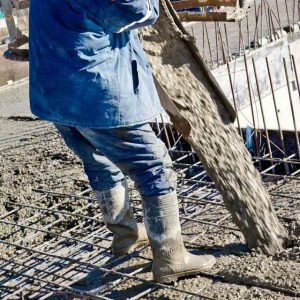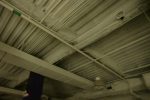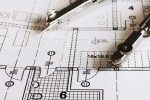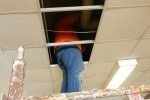GPR Cost Versus Level of Confidence
Concrete Scanning Cost.
Without doubt, cost, level of effort, and degree of confidence go hand in hand.
In my experience, cost is the number one deciding factor when it comes to selecting a GPR concrete scanner. In addition to cost, availability is often the second most important deciding factor. Neither one of these criteria reflect the quality of work. As a result, contractors, estimators, project managers, site supervisors, and engineers may conveniently assume that all GPR concrete scanning services are equal. After all, these services should be, more or less, equal.
People buying concrete scanning services do not always understand the technology. Thus, no one questions the level of effort and the degree of confidence of the results. If there is an accident, the mindset is that the concrete scanner is at fault. However, concrete scanners expediently fall back on the position that there are no guarantees. I agree, no one can guarantee services that produce results from indirect observations. Nevertheless, this should be the exception to the rule not the standard of operation.
Understand the level of services provided.
Of course, cost and time restraints invoked by clients are important. When budgets and/or time are limited, then one needs to balance the cost with the level of effort and the degree of confidence. I believe in offering services that reflects the client’s needs, which is not always the highest level of effort. Nevertheless, the client makes the choice how to proceed.
Greater levels of confidence, generally, require a greater level of effort.
While one may be very confident that a single GPR concrete scanning line is demonstrating what is at depth, it may not reveal the entire picture. It is often necessary to use concrete scanners to image an area of concern, which encompasses the region surrounding what is being cut or penetrated. Below are some of the factors that reflect a higher level of confidence. Consequently, the concrete scanning services also reflect a higher level of effort.
Continuity
If the primary concern is locating a specific line or feature, it is import to confirm that the GPR scanning results are imaging what you want to locate. That is to say, one must map the feature from one known location to a second location. For example, a compressed air line feeds a hospitals surgery room. The line is of upmost importance and is adjacent to nearby telephone lines that lead to the snack room. Without a contingency plan in place, the concrete cannot be cut within two feet to either side of the compressed air line. Instead of concrete scanning an area to see if there are any lines, one could also map the compressed air line to make sure it is not near the area where the concrete is being cut.
Resolution
A single line offers little in comparison to a multiline survey. Acquiring data along closely spaced parallel lines, often less than or equal to 3 inches apart, provides the detail necessary for the post processing software to produce high resolution results. While lines spaced 3 to 12 inches apart may produce reasonable results, it is only when something is hit that it was clear a smaller line spacing was necessary. A adjacent case history demonstrates how lines orientated in one direction can fail to locate a water line.
Mapping versus detection.
So that features of concern are visible in the GPR concrete scanning results, one needs to collect GPR data along perpendicular lines. In other word, acquire data over a grid by conducting the GPR survey with lines perpendicular to each other.
Permanently mark spatial control points for relocating the grid.
It is not too difficult to acquire GPR lines that yield spectacular three-dimensional plots. However, the plots do little good if one does not know how to relocate or reorientate the plots at the site. That is to say, one must be able to go back to the survey area and know how to apply the GPR concrete scanning results to the area of concern.
Establish a test survey area over known conditions.
From a quality assurance or quality control point of view. One should establish a small test area, ideally over known conditions. Conducting a concrete scan over a small test area at the start and end of a day demonstrates the repeatability and functionality of the equipment. This process helps identify possible equipment malfunctions and reduces possible equipment error. Conducting the survey over know conditions assists with determining velocities. However, be aware that velocities can vary across a site.
Allow time for detailed processing, analysis, and reporting.
While many GPR concrete scanners offer default settings, these settings are only a place to start. Without doubt, one can often improve the quality of the images through post processing. Post processing can take place onsite. On the other hand, when an operator has time to review the results and is not under pressure to provide real time interpretations, one can expect better results. At all times, additional interpretation and/or analysis may be necessary, especially as others provide additional information.
Cautionary note about minimum GPR services.
Undoubtedly, a minimalistic approach yields the lowest level of confidence. It is often associated with unrecorded data acquired along a single line that is unmarked for future reference. This approach is inexpensive but seldom cost-effective, if repair costs are factored in. It can be a viable approach if one wishes to relocate a known feature just before cutting. As a relocating tool, it can improve one’s level of confidence. Above all, know that if the minimum cost approach is the primary method of investigation, one can expect to hit or damage an unexpected, missed, or unidentified target sometime in the near future.
What to expect when you request a GPR survey
First, you need to remember that intrusive activities yield a direct observation of a feature at depth. Geophysical methods indirectly characterize features at depth. Thus, geophysical services are not nearly as conclusive as direct observation. The issue at hand is that actual sources of anomalies cannot be inferred from the data and must be determined by other means of investigation (often through direct observation and/or validation). The correlation of any anomaly to a feature does not guarantee what the source is and does not clear the area of any other possible sources.
Be aware that geophysical services and/or methods never directly detect or scan a feature (pipe, conduit, wire, void, etc.) at depth. More specifically, ground penetrating radar (GPR) and utility locators are only capable of detecting and mapping the electromagnetic fields that are reflected, refracted, and/or radiated from a target at depth. The mapped field may yield a highly complex relationship to the geophysical measurements recorded. Target size, depth, reflectivity, and dielectric properties all play a role in whether or not a target at depth is clearly observed in the GPR record. Therefore, conclusions drawn, no matter how logically deduced, should not be misconstrued as fact.

Review of Validation of NDT Equipment for Concrete





